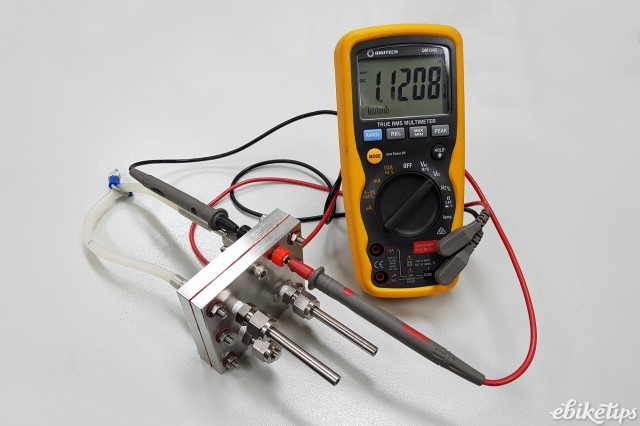New environmentally friendly battery technology could revolutionise e-bikes
ebiketips
There’s always a new battery technology around the corner. The last one we reported on was the Sodium Glass battery being developed at the University of Texas at Austin, with a team that includes the inventor of the original Lithium Ion battery, 94-year-old John Goodenough. This new tech that’s now a working prototype is the brainchild of a team at RMIT University in Melbourne, and looks very interesting, not least because it doesn’t require anything that’s rare or expensive to extract.
The proton battery is in effect a reversible fuel cell, with carbon as the main substrate. Carbon, obviously, is abundant and cheap, which is a major draw here. The charging process involves capturing protons made from the splitting of water molecules, and storing them in the carbon electrode. Power is produced when hydrogen atoms are released from the electrode. They lose an electron and the resulting protons form water with oxygen from the air. The carbon isn’t burnt, so there are no emissions and water is the only by-product.
Sounds good, right? The battery is currently only at prototype stage, with the working cell only the size of a small coin. But even at this stage, the energy density of the battery is about the same as a production Lithium Ion cell, and there’s plenty of scope for increasing that energy density by using carbon structures such as graphene to improve the storage efficiency.
“Our latest advance is a crucial step towards cheap, sustainable proton batteries that can help meet our future energy needs without further damaging our already fragile environment,” says lead researcher Professor John Andrews.
“As the world moves towards inherently-variable renewable energy to reduce greenhouse emissions and tackle climate change, requirements for electrical energy storage will be gargantuan.
“The proton battery is one among many potential contributors towards meeting this enormous demand for energy storage. Powering batteries with protons has the potential to be more economical than using lithium ions, which are made from scare resources.
“Carbon, which is the primary resource used in our proton battery, is abundant and cheap compared to both metal hydrogen-storage alloys, and the lithium needed for rechargeable lithium ion batteries.”
It’s certainly a technology to keep an eye on, although it’s probably a decade out from being widely commercially available right now. But it’s certainly another indicator that with the world increasingly looking to renewables and emission-free power, battery storage is likely to be a major focus for the future.
Image or gallery:
